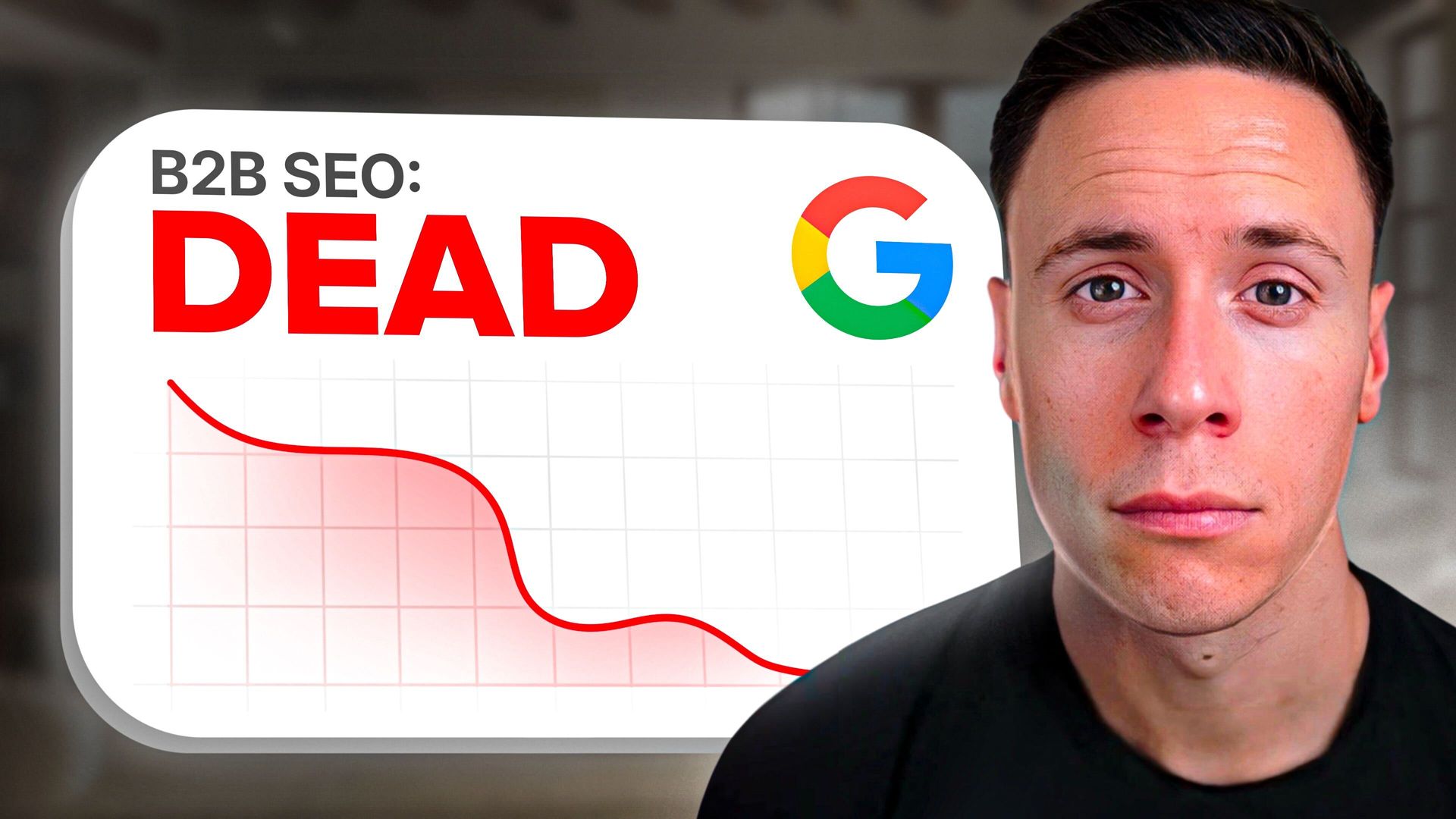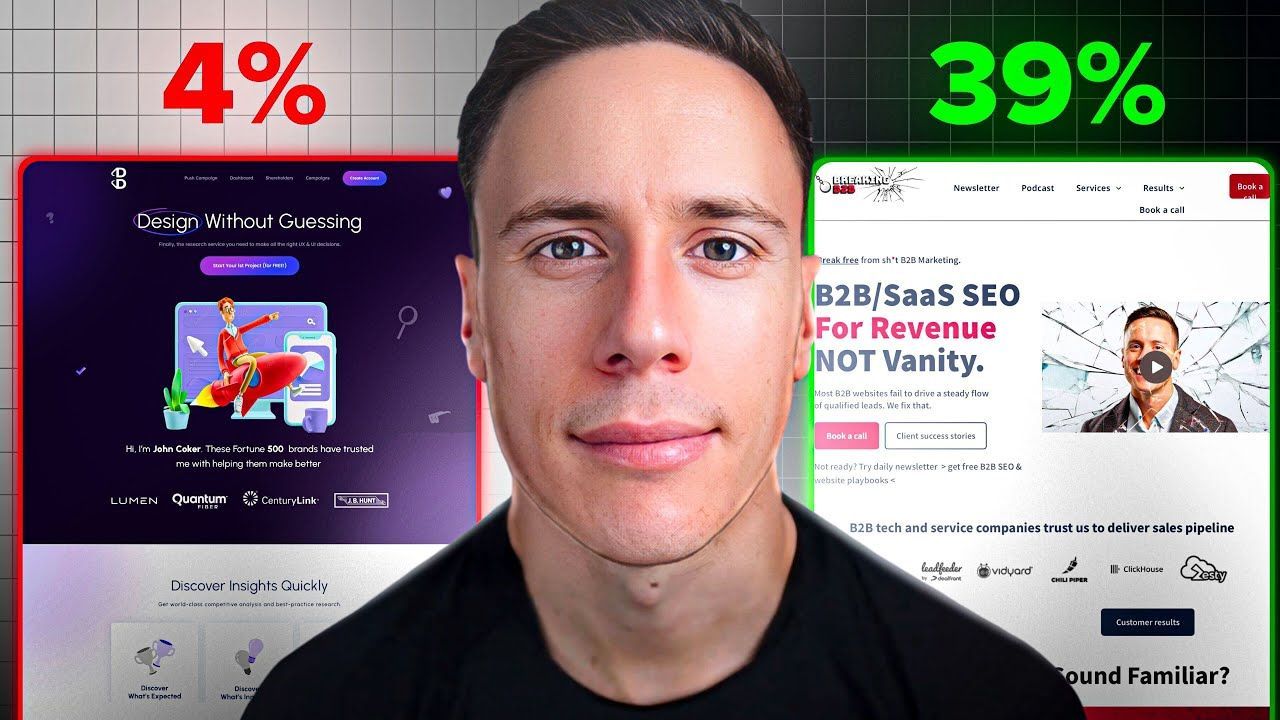Table of Contents
Ready To Grow Organic Pipeline & Revenue?
See if we can scale your organic pipeline from SEO as quick as 90 days.
Quick Summary
Building a Results-Driven SaaS Content Marketing Strategy
The average spend per employee in the Software as a Service (SaaS) market globally is anticipated to reach US$108.70 in 2025, underscoring the growing investment in SaaS solutions. With this increase, SaaS content marketing is no longer just about publishing content, it’s about driving measurable results. Without a clear strategy, even the best content can go unnoticed.
The goal is to create high-value, targeted content that attracts, nurtures, and converts the right audience. A strategic approach prioritizes SEO-driven, problem-solving content that aligns with the SaaS buyer’s journey. Every piece should have a clear purpose as random efforts won’t cut it.
By building a data-backed strategy, your content becomes a growth engine. This BreakingB2B guide breaks down the steps to build and scale a SaaS content marketing strategy that delivers real business impact.
But first…
Why Listen to Us?
At BreakingB2B, we specialize in creating data-driven, SEO-focused content strategies for SaaS businesses. With extensive experience in B2B marketing, we've helped companies optimize their content to attract, nurture, and convert leads. Our proven approach ensures that each piece of content serves a clear purpose and delivers measurable results.
We don't just talk about best practices, we implement them, and we know what works in the competitive SaaS space. Let us guide you through building a content strategy that drives organic growth and fuels business success.
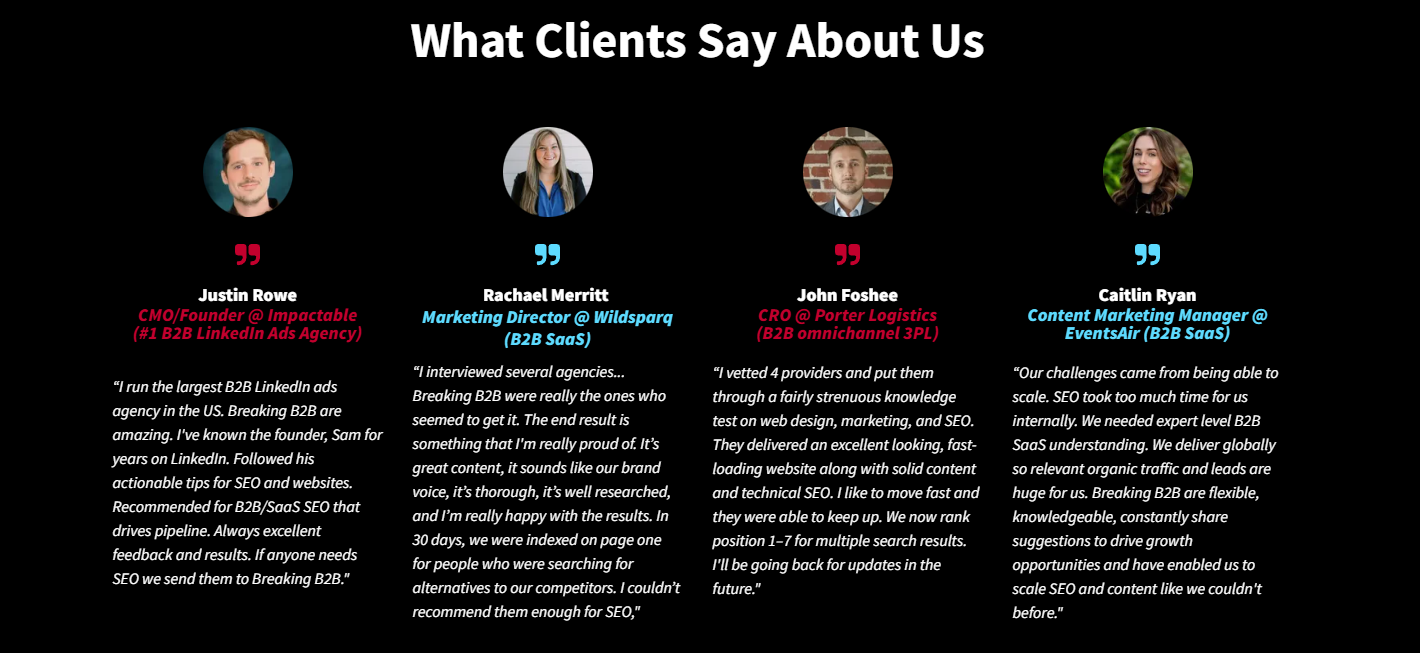
What Is SaaS Content Marketing?
You’re most likely familiar with content marketing. But what about content marketing specifically for Software as a Service (SaaS)?
SaaS content marketing is the process of creating and distributing strategic content to attract, engage, and convert software buyers. It focuses on solving problems, educating users, and driving action through SEO, thought leadership, and customer-focused resources.
Unlike generic content marketing, SaaS strategies align with a longer, more complex buyer’s journey. As a result, the content addresses the awareness, consideration, and decision stages, guiding prospects from discovery to purchase. Every piece should clearly generate demand and retention.
Success depends on consistency, search visibility, and relevance. Data-driven insights ensure content reaches the right audience, drives engagement, and supports long-term business growth.
Why Is SaaS Content Marketing Important?
Here’s why a strong content strategy matters:
- Drives Organic Growth: SEO-optimized content attracts high-intent traffic, reducing reliance on paid ads and lowering long-term acquisition costs.
- Educates and Nurtures Leads: Buyers need in-depth information before committing to software. Content helps guide them from awareness to purchase.
- Establishes Industry Authority: High-quality content builds trust and positions a brand as a go-to expert in its niche.
- Reduces Churn and Boosts Retention: Educational content keeps customers engaged, helping them maximize product value and stay long-term.
- Scales Lead Generation: Evergreen content continuously generates leads, creating a predictable and cost-effective pipeline for conversions.
10 Steps on How to Create and Execute a Unique SaaS Content Marketing Plan that Delivers
Step 1: Define Goals and Audience
Content marketing without clear goals is a wasted investment. Before creating anything, define what success looks like. Are you optimizing for lead generation, customer retention, or authority building? Each goal requires a different content approach.
Understanding your audience is just as important. SaaS buyers don’t make impulse purchases—they research, compare, and analyze before committing. To reach them effectively, segment your audience based on the following:
- Pain Points: What problems drive them to seek a solution?
- Buying Stage: Are they discovering, evaluating, or ready to convert?
- Decision-Makers vs. Users: Who influences the purchase, and who actually uses the product?
- Preferred Content Formats: Blogs, whitepapers, videos, or podcasts?
Once your goals and audience are clear, your content strategy gains direction. This clarity impacts keyword selection, messaging, and distribution. That’s why a SaaS blog targeting top-of-funnel prospects will look very different from one designed to nurture existing customers.
Precise targeting ensures that every piece of content moves potential buyers closer to conversion. The result? A marketing engine that drives engagement, leads, and long-term customer retention.
HubSpot does a great job of tailoring content for different audiences. They offer marketing blogs for professionals, sales guides for teams, and customer success resources for businesses. This way, no matter who’s reading, there’s content that directly speaks to their needs.
Now that we know who you’re targeting and what they want, we can move on to the next step.
Step 2: Conduct Keyword and Competitor Research
SaaS content marketing is highly competitive. Without a strong SEO foundation, even great content won’t get found. The first step is identifying high-intent keywords—the search terms potential customers use when actively looking for solutions.
However, keyword research isn’t just about volume; it’s about intent:
- Transactional vs. Informational Searches: Are users looking to buy or just researching? Target both but optimize accordingly.
- Industry-Specific Long-Tail Keywords: Niche searches often convert better than broad, high-volume terms.
- Competitive Gaps: Where are your competitors ranking that you aren’t?
We don’t just compete—we out-position. By analyzing top-ranking competitors, we reverse-engineer their success to identify content gaps and ranking opportunities.
We recently implemented a comprehensive SEO strategy for a B2B SaaS client, including in-depth keyword research, a technical audit, and a full content roadmap. As a result, we achieved:
- #1 rankings for the highly competitive “alternative” keyword within just 30 days
- Significant improvements in organic search visibility and site engagement
- Ongoing collaboration for content creation and SEO, ensuring continued growth
The client was thrilled with the short-term impact, leading to a long-term partnership focused on SEO, content creation, and strategic web support.
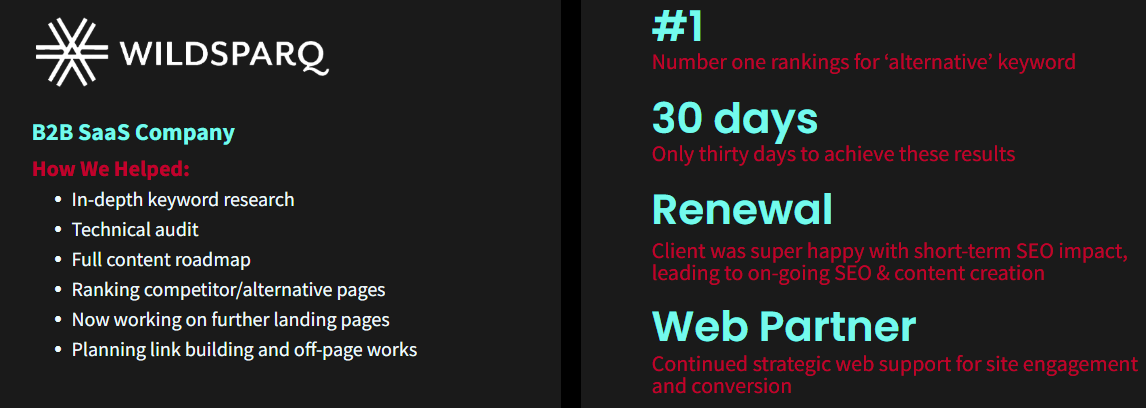
Who’s ranking for key terms? What type of content wins in your space? We leverage tools like Ahrefs and Semrush to reveal backlink strategies, content formats, and topic gaps we can exploit.
As
B2B SaaS SEO specialists, we understand how to help SaaS businesses achieve high-intent visibility. This means creating content that doesn’t just rank but also converts, integrating search intent with the buyer’s journey to ensure that ranking content drives action.
Step 3: Map Content to the Buyer’s Journey
Having worked with hundreds of SaaS businesses over the years, we’ve learned that SaaS buyers don’t convert overnight. They move through a multi-step decision process, and content must guide them at each stage.
So, if your content strategy is not mapped to the buyer’s journey, you’ll either lose leads too early or fail to convert them later. To keep leads in the funnel, we create specific content types for each stage:
- Awareness (Top-of-Funnel): Suitable content for this stage includes blog posts, guides, and podcasts that introduce pain points and industry trends.
- Consideration (Mid-Funnel): This is where we prepare case studies, whitepapers, and comparison pages that position your solution as a strong contender.
- Decision (Bottom-of-Funnel): At this stage, we design product demos, pricing pages, and testimonials that remove objections and drive conversions.
Interestingly, a common mistake is bombarding awareness-stage visitors with sales-driven content. They are not ready to purchase; they need education and problem-solving, not a hard sell.
On the other hand, neglecting to provide compelling content at the decision stage can cause potential customers to hesitate and ultimately delay or forgo conversion. It’s a bit of a tricky situation, but do not worry.
Our approach ensures that each content asset has a clear role in the sales funnel. As experts, we don’t create content for the sake of it. We build strategic assets that nurture leads, answer key questions, and eliminate barriers to purchase.
Step 4: Create High-Quality, Optimized Content
Now that we know the type of content our leads need, the next step is ensuring that it’s high-quality, optimized, and impactful.
SaaS content must do more than inform, it needs to persuade, rank, and convert. A blog post without a clear purpose won’t generate leads. That’s why we focus on crafting SEO-driven content that speaks to both search engines and decision-makers.
Every piece of content we create is usually:
- Actionable: Readers walk away with clear next steps, not just theory.
- Optimized for Search: Strong keyword placement, structured headings, and internal linking improve visibility.
- Visually Scannable: Short paragraphs, bullet points, and visuals make consuming content easier.
- Conversion-Focused: Every article should guide readers toward the next logical step in their journey.
Publishing content just for the sake of it won’t work. Instead, focus on depth over volume—a well-researched, high-value post will always outperform ten rushed articles.
A SaaS brand selling a business intelligence tool can go beyond writing blog posts. They can:
- Bring in industry experts to provide unique insights.
- Include interactive benchmarks that let users compare their performance.
- Ensure content helps users solve real problems, making it practical rather than just theoretical.
At Breaking B2B, we prioritize depth over volume, creating content that answers real customer questions while aligning with business goals.
But that’s not all—content is only as effective as its presentation. That’s why we also offer
B2B SaaS web development services, ensuring high-quality content is delivered through a user-friendly, scalable, and innovative platform.
Step 5: Distribute and Promote Strategically
Even the best content won’t drive results if no one sees it. Content distribution is just as important as content creation. Relying solely on organic reach limits visibility, so taking a multi-channel approach ensures maximum engagement.
Let’s see the channels involved in our approach.
SEO for Long-Term Traffic and Visibility:
Without SEO, even the most valuable SaaS content risks getting buried beneath competitors on search engine results pages (SERPs). At BreakingB2B, we implement a strategic SEO plan that focuses on:
- Targeting High-Intent Keywords: We prioritize long-tail, high-intent queries that align with SaaS buyer pain points, such as “best project management software for remote teams” instead of just “project management software.”
- Optimizing Blog Posts and Landing Pages: Structured headings, keyword placement, schema markup, and mobile-friendly formatting enhance rankings and engagement.
- Building Internal Linking Strategies: Smart linking improves navigation and SEO, guiding visitors to related content like email automation, content marketing, or sales funnel optimization.
- Refreshing and Updating Older Content: We continuously update high-performing content with fresh stats, case studies, and keyword enhancements to maintain rankings.
- Earning Backlinks and Authority: Original research, expert guides, and data reports attract backlinks that boost domain authority.
- Optimizing for Featured Snippets: Bullet points, numbered lists, and concise summaries increase the chances of securing Google’s Position Zero.
For instance, we helped a
B2B service provider rank
#1 for revenue-driving keywords within a month of publishing. This was achieved by boosting law-ranking content organically and focusing on bottom-funnel traffic. We initially started with a 3-month trial, and after seeing early successes, the client extended the partnership to a 12-month contract. Our strategy focused on increasing traffic and click-throughs while ensuring long-term growth and visibility.
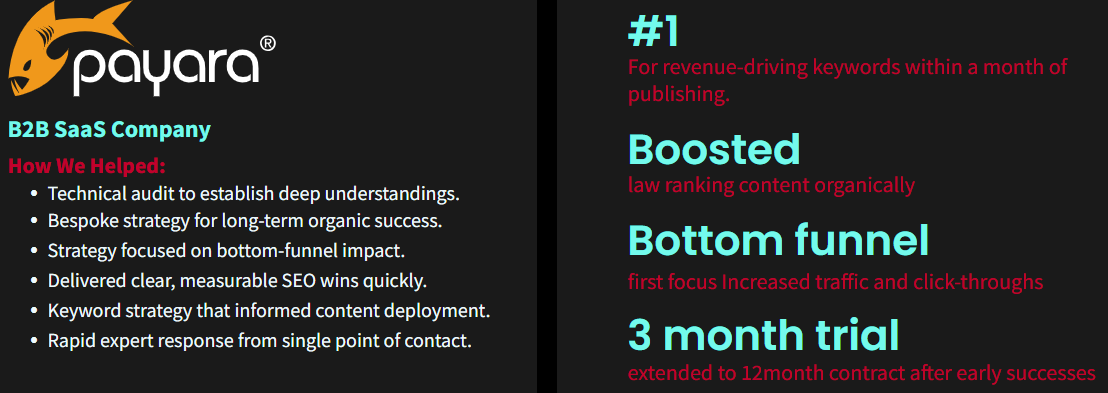
Other Distribution Channels:
A successful SaaS content marketing strategy doesn’t rely on SEO alone. We integrate multiple distribution channels to extend reach:
- Email Marketing: Engages warm leads, ensuring content reaches interested prospects.
- Social Media: LinkedIn, Twitter, and industry communities amplify content and drive discussions.
- Paid Promotion: Retargeting and PPC accelerate visibility among high-intent audiences.
- Partnerships and Guest Contributions: Collaborations with industry leaders expand brand authority beyond owned channels.
-
A strong distribution strategy ensures every content asset delivers measurable business impact by maximizing reach and engagement across multiple platforms.
Step 6: Measure Performance and Iterate
Without measurement, content marketing is just guesswork. Tracking key performance metrics helps identify what’s working, what’s not, and where to optimize. Content should evolve based on data-driven insights, not assumptions.
To measure success, we focus on:
- Traffic and Rankings: Organic search performance, keyword rankings, and site visits.
- Engagement: Bounce rate, time on page, and social shares.
- Lead Generation: Conversion rates, form fills, and email signups.
- Customer Impact: Churn reduction, product adoption, and upsell opportunities.
At Breaking B2B, our B2B SEO services also help SaaS businesses analyze performance and refine content for long-term gains.
Step 7: Scale with Automation and Repurposing
SaaS content marketing doesn’t scale by doing more; it scales by doing smarter. As content volume grows, maintaining consistency and efficiency becomes critical. We focus on automation, workflows, and repurposing to maximize impact without overloading resources.
Instead of constantly creating from scratch, we refine, expand, and distribute strategically. Doing this–repurposing–extends content lifespan and reach:
- Turn blog posts into LinkedIn carousels or Twitter threads.
- Extract insights from whitepapers for email sequences.
- Use podcast episodes as the foundation for long-form content.
Automation streamlines content distribution and engagement. Scheduling tools keep the content flowing, while lead nurturing sequences keep prospects engaged without manual effort.
It’s important to note that scaling doesn’t mean sacrificing quality. We ensure every content piece works harder, feeding multiple channels and driving ongoing engagement.
Step 8: Leverage Interactive and Video Content
Great content isn’t just about words on a page—it’s about engagement. While traditional blog posts and whitepapers provide valuable insights, interactive and video content take engagement to the next level by making information easier to consume and more memorable.
Incorporating interactive elements and video marketing can:
- Increase Time-on-page: Users spend more time engaging with dynamic content.
- Boost Conversions: Interactive tools help users see the value of your product faster.
- Improve Knowledge Retention: Video content makes complex topics easier to understand.
Here’s how we integrate interactive and video content into the SaaS marketing strategy:
- Quizzes and Calculators: Help users get personalized insights (e.g., ROI calculators, cost estimators).
- Interactive Demos and Walkthroughs: Allow potential customers to experience the product before signing up.
- Webinars and Live Q&A Sessions: Position your brand as an industry leader while engaging with potential buyers.
- Explainer and Tutorial Videos: Simplify complex features and showcase product benefits.
By combining interactive tools, videos, and live sessions, your content strategy extends beyond static blog posts, driving deeper engagement, higher conversions, and stronger brand recall.
Step 9: Optimize Content for Retention and Upselling
Most SaaS companies focus heavily on acquiring new users, but retaining and growing existing customers is just as important—if not more. A strong content strategy shouldn’t just attract customers; it should also keep them engaged and encourage upgrades over time.
Why Retention and Upselling Matter:
A well-optimized retention and upselling strategy can:
- Reduce Churn: Help customers get more value from your product, increasing long-term retention.
- Encourage Deeper Product Usage: Educate users on lesser-known features that could solve their pain points.
- Increase Customer Lifetime Value (CLV) – Position premium features or higher-tier plans as natural upgrades.
Here are the common types of retention and upselling content:
- Advanced Tutorials and Onboarding Resources: Help customers set up faster and fully utilize your product.
- Feature Announcements and Product Updates: Keep users excited about new capabilities and encourage upgrades.
- Customer Case Studies and Success Stories: Showcase how businesses achieve actual results using your SaaS.
- Comparison Content: Highlight the benefits of higher-tier plans and help users decide if upgrading makes sense.
A SaaS product can improve its retention by adding exit-intent pop-ups that offer downloadable PDFs of its blog content. This will keep users engaged and convert new subscribers, turning passive readers into long-term leads.
By using content to educate, engage, and upsell, you can increase customer satisfaction, reduce churn, and maximize revenue without constantly chasing new signups.
Step 10: Take Advantage of User-Generated Content and Community Engagement
Your audience trusts real users more than brand-driven messaging. That’s why user-generated content (UGC) and community engagement are potent tools for building credibility and trust in SaaS marketing. Instead of just telling potential customers how great your product is, let your existing users do it for you.
A strong UGC and community strategy can:
- Boost Trust and Social Proof: Prospects trust real experiences more than branded content.
- Increase Organic Reach: Users sharing success stories expose your SaaS to new audiences.
- Strengthen Customer Loyalty: Engaging communities create stronger brand advocates.
Here are a few ways we use user-generated content and community engagement for marketing:
- Customer Testimonials and Reviews: Showcase real success stories on your website and social media.
- Social Media Shoutouts and Case Studies: Feature actual users achieving results with your SaaS.
- Community Building (LinkedIn, Slack, Forums): Create spaces for discussions and peer learning.
- Product Feedback and Beta Groups: Involve engaged users in feature testing to drive adoption.
If, for instance, a SaaS company wants to scale awareness, they can repurpose thoughts from their leadership posted on LinkedIn into newsletters, blogs, and case studies. This would increase impressions and engagement because authentic, community-driven content usually fuels organic growth.
Encouraging real user stories and active communities turns your audience into brand ambassadors, helping your SaaS grow organically and sustainably.
Best Practices for SaaS Content Marketing
Following a structured content strategy is essential, but execution determines success. These best practices ensure your content delivers measurable impact.
- Prioritize Content Depth Over Frequency: Publishing frequently doesn’t guarantee results. In-depth, high-quality content has a longer shelf life, ranks better, and provides more value. Instead of pushing out weekly blog posts with surface-level insights, focus on producing comprehensive, research-backed content that answers complex buyer questions.
- Optimize for Intent, Not Just Keywords: A common SEO mistake is prioritizing high-volume keywords without considering user intent. Ranking for “best CRM software” is pointless if your product is not listed in a comparison article. Instead, identify transactional vs. informational queries and align content accordingly.
- Update and Refresh High-Performing Content: Old content loses relevance. A SaaS article ranking today can drop off search results in six months if competitors publish fresher insights. Regularly audit and update high-performing pages by adding new statistics, refining outdated information, and optimizing for emerging keywords.
- Use Data to Refine, Not Just Report: If a high-ranking page has a low conversion rate, test different CTAs or improve content alignment with user intent. If an article has high bounce rates, consider restructuring it for better readability, adding visuals, or making the introduction more engaging.
- Leverage Multiple Formats for Maximum Reach: Different audience segments prefer different content formats. A C-level executive may engage with a podcast, while a product manager might prefer a detailed case study. Repurposing content extends its reach without requiring constant new creation.
- Integrate Conversion Paths Into Content: Great content without a clear next step is a missed opportunity. Every content asset should move the reader further down the funnel. A well-placed CTA for a free trial, demo, or downloadable resource provides a logical transition.
For example, a SaaS pricing guide should include a comparison tool or a calculator that helps prospects estimate ROI and seamlessly turn information into action.
By following these best practices, SaaS content marketing becomes a measurable, scalable growth strategy rather than just a content production effort.
Driving Measurable Growth with personalized SaaS Content Strategies
SaaS content marketing is not just about writing, it’s about strategy, execution, and optimization. From defining goals to scaling distribution, each step plays a role in attracting, nurturing, and converting leads. With the right approach, content becomes a growth engine, not just a marketing task.
At BreakingB2B, we specialize in B2B web design, SEO, and content strategy that turns content into a lead-generating asset. Whether you need high-performance content, SEO-driven visibility, or a strategic distribution plan, we help SaaS brands maximize impact.
Want to turn your SaaS content into a lead-generation engine?
Book a call today to discuss a tailored content marketing strategy that drives measurable growth.






